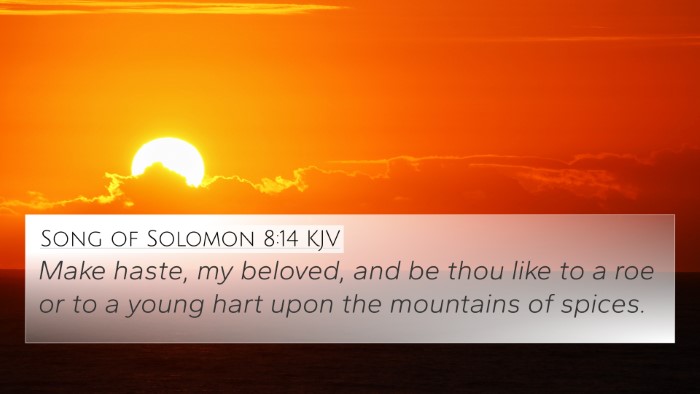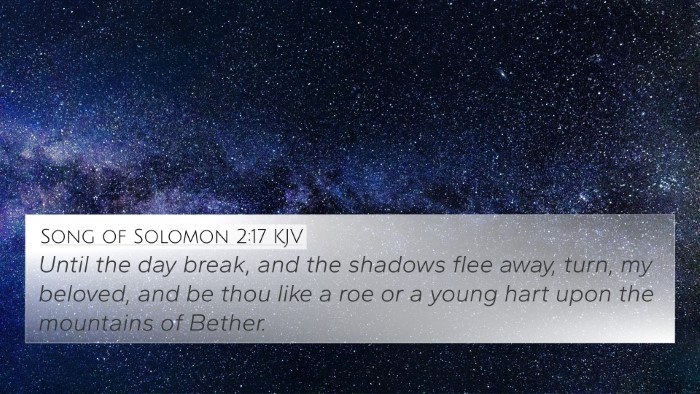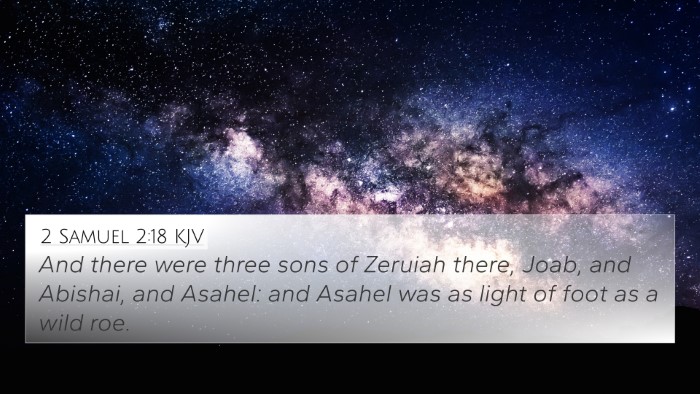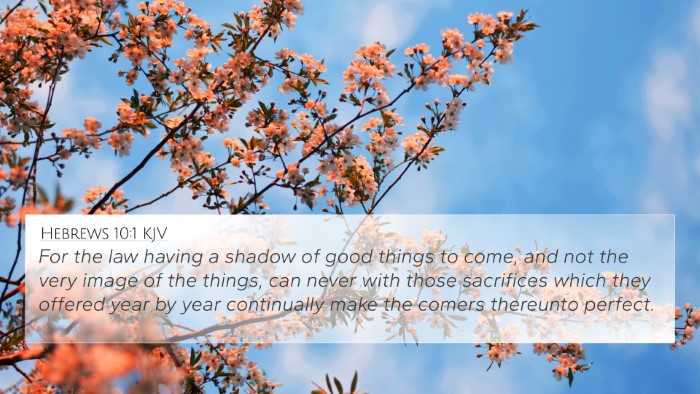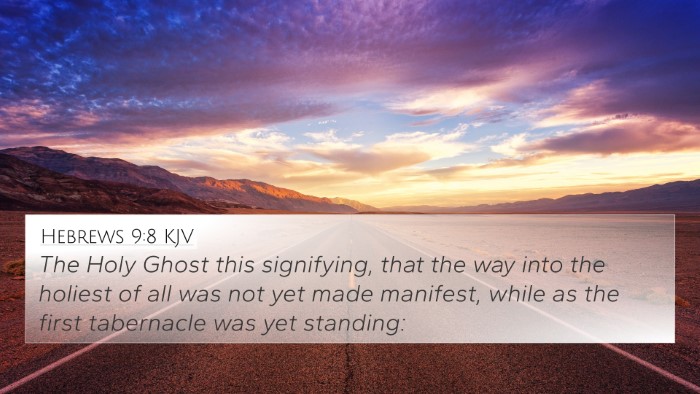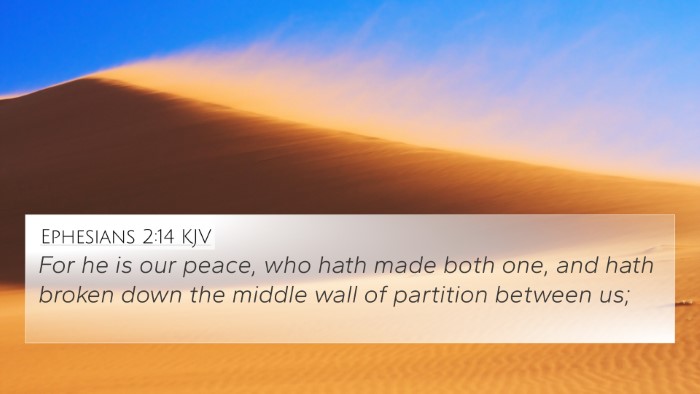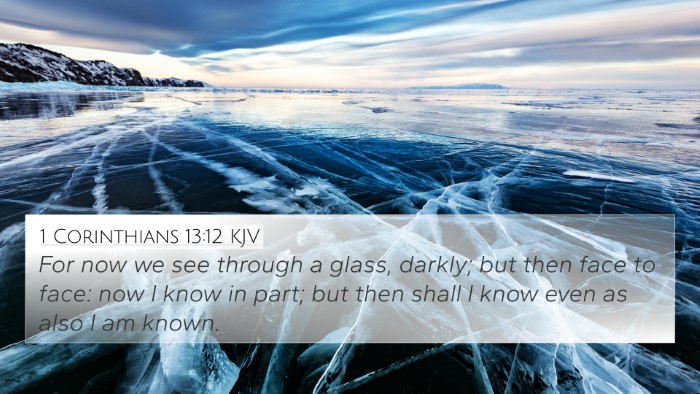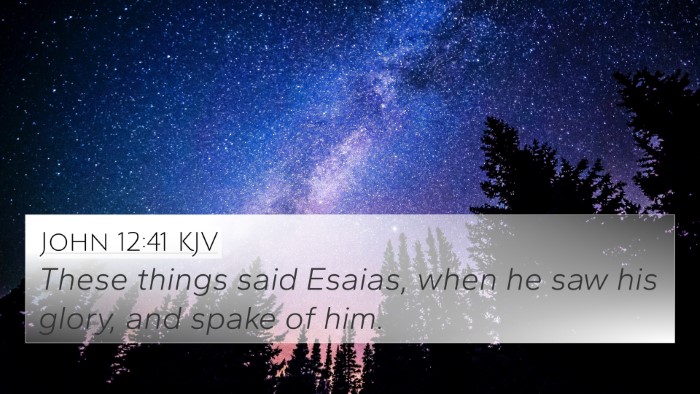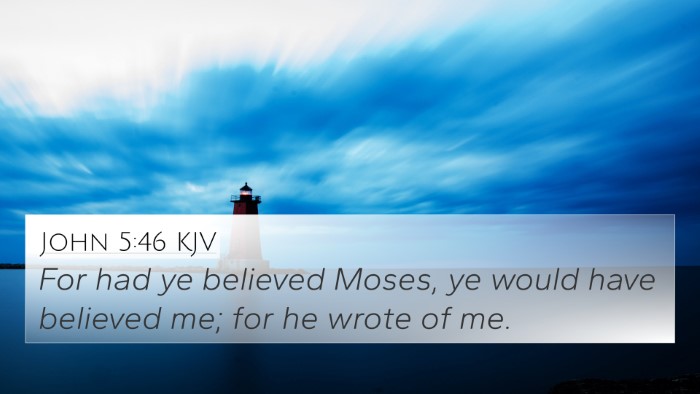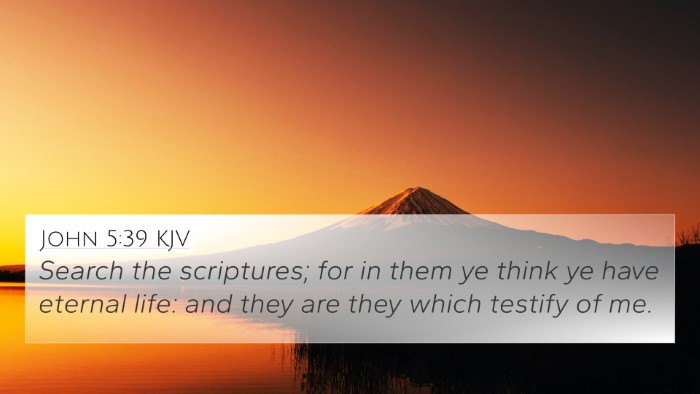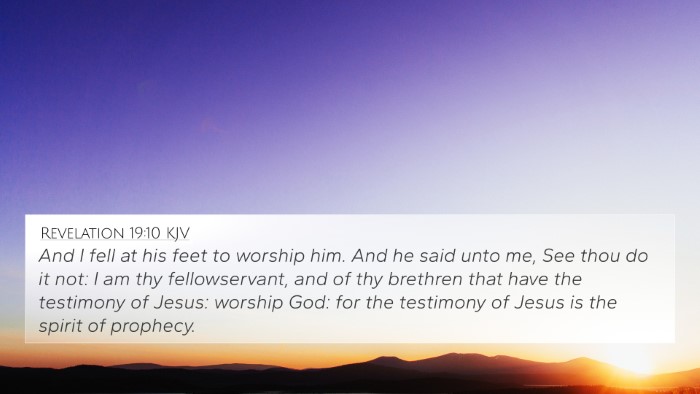Understanding Song of Solomon 2:9
Verse: "My beloved is like a roe or a young hart: behold, he standeth behind our wall, he looketh forth at the windows, showing himself through the lattice." (Song of Solomon 2:9)
Overview of Song of Solomon 2:9
This verse presents an intimate and poetic image that encapsulates the affection and yearning between the bride and the bridegroom. It suggests a desire for closeness while also embodying the tension of longing and the beauty of love experienced from a distance.
Commentary Insights
- Matthew Henry:
Henry emphasizes the symbolism of the beloved as a young deer, portraying both grace and swift beauty. The reference to the "wall" signifies separation yet also protection. The beloved’s presence behind the wall serves as a metaphor for God’s watchful care, and it resonates with the idea of the beloved’s desire to make himself known.
- Albert Barnes:
Barnes highlights that the "roe" or "young hart" is indicative of vitality and gentleness. He notes that the beloved’s posture—looking through the lattice—represents a longing and an anticipation of the beloved coming forth, which can be interpreted in the human and divine relational context as God’s longing to draw near to His people.
- Adam Clarke:
Clarke focuses on the imagery of the lattice and the windows, which provides a visual representation of temptation and desire. The lattice acts as a barrier through which the beloved is revealed, suggesting that while there is distance, there is also a longing that draws them closer. He correlates this with the search for divine love and intimacy.
Bible Verse Cross-References
This verse connects to several other scriptures that resonate with themes of love, longing, and divine intimacy:
- Songs of Solomon 4:9: "Thou hast ravished my heart, my sister, my spouse; thou hast ravished my heart with one of thine eyes, with one chain of thy neck."
- Isaiah 26:9: "With my soul have I desired thee in the night; yea, with my spirit within me will I seek thee early."
- Psalm 42:1: "As the hart panteth after the water brooks, so panteth my soul after thee, O God."
- John 10:9: "I am the door: by me if any man enter in, he shall be saved, and shall go in and out, and find pasture."
- Songs of Solomon 1:2: "Let him kiss me with the kisses of his mouth: for thy love is better than wine."
- Revelation 3:20: "Behold, I stand at the door, and knock: if any man hear my voice, and open the door, I will come in to him, and will sup with him, and he with me."
- Matthew 5:5: "Blessed are the meek: for they shall inherit the earth."
Thematic Bible Verse Connections
The themes of love and longing in Song of Solomon 2:9 can be linked to a broader biblical narrative about the relationship between God and His people. These connections offer a deeper understanding of the verse's place in the canon:
- Intimacy and Relationship: The motif of intimate communion between the beloved and the bride draws parallels to God's desire for intimacy with humanity, reflected in verses like James 4:8.
- Longing for God: Themes of longing found in Psalm 63:1 echo the desires expressed in Song of Solomon 2:9.
- Divine Pursuit: Similarities can be seen in Luke 15, where the lost are sought after just as the beloved longs to be seen.
- Joy of Revelation: The excitement of divine revelation in joyous anticipation resonates with Colossians 3:4, where believers find life in Christ.
Understanding through Cross-Referencing Biblical Texts
The practice of cross-referencing enhances our understanding of biblical themes by revealing connections and parallels across the Scriptures. Here’s how it can be utilized effectively:
- Tools for Bible Cross-Referencing: Utilize a Bible concordance or a cross-reference guide for identifying relationships.
- Comparative Bible Verse Analysis: Engage in a comparative study of verses to reveal underlying thematic connections.
- How to Use Bible Cross-References: Learn to navigate biblical texts to draw connections between verses, enriching your personal study.
Conclusion
Song of Solomon 2:9 presents a beautiful picture of love that captures the desire and yearning present in romantic relationships and mirrors the deep longing humans have for divine connection. By drawing parallels and cross-referencing with other biblical texts, believers can gain deeper insight into the nature of love, desire, and God's faithful pursuit of humanity.
For anyone studying this verse, it provides not just a poetic expression of love but serves as a reminder of the greater love story unfolding throughout the Bible—the passionate pursuit of God for His people.



